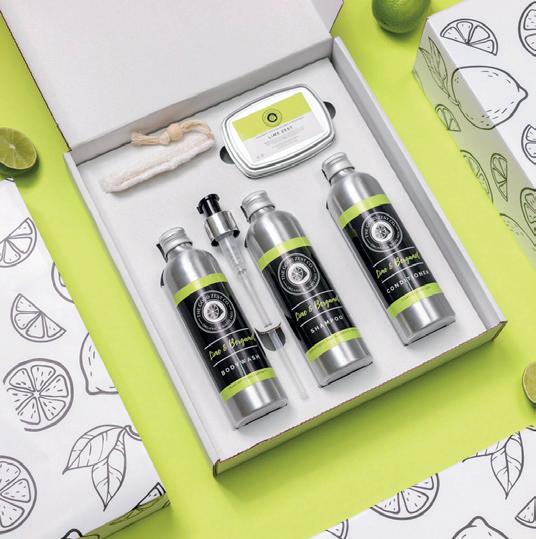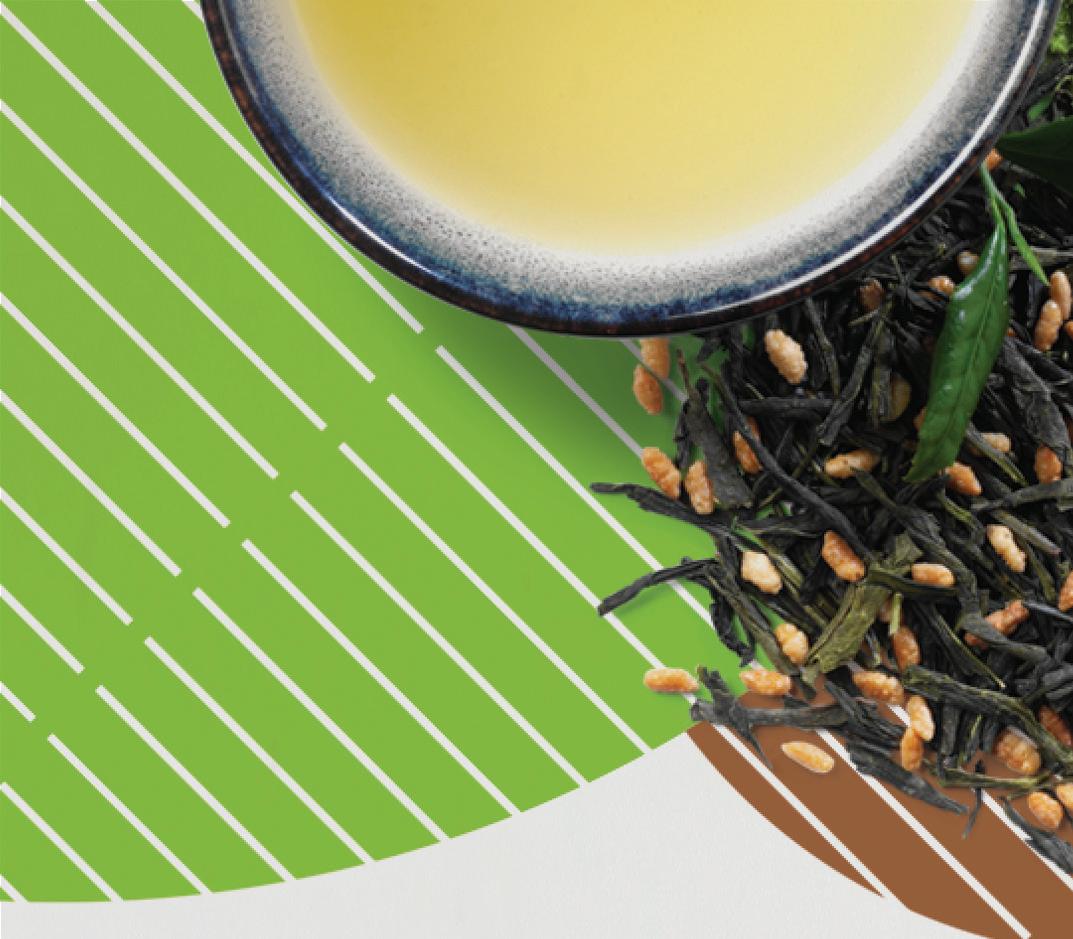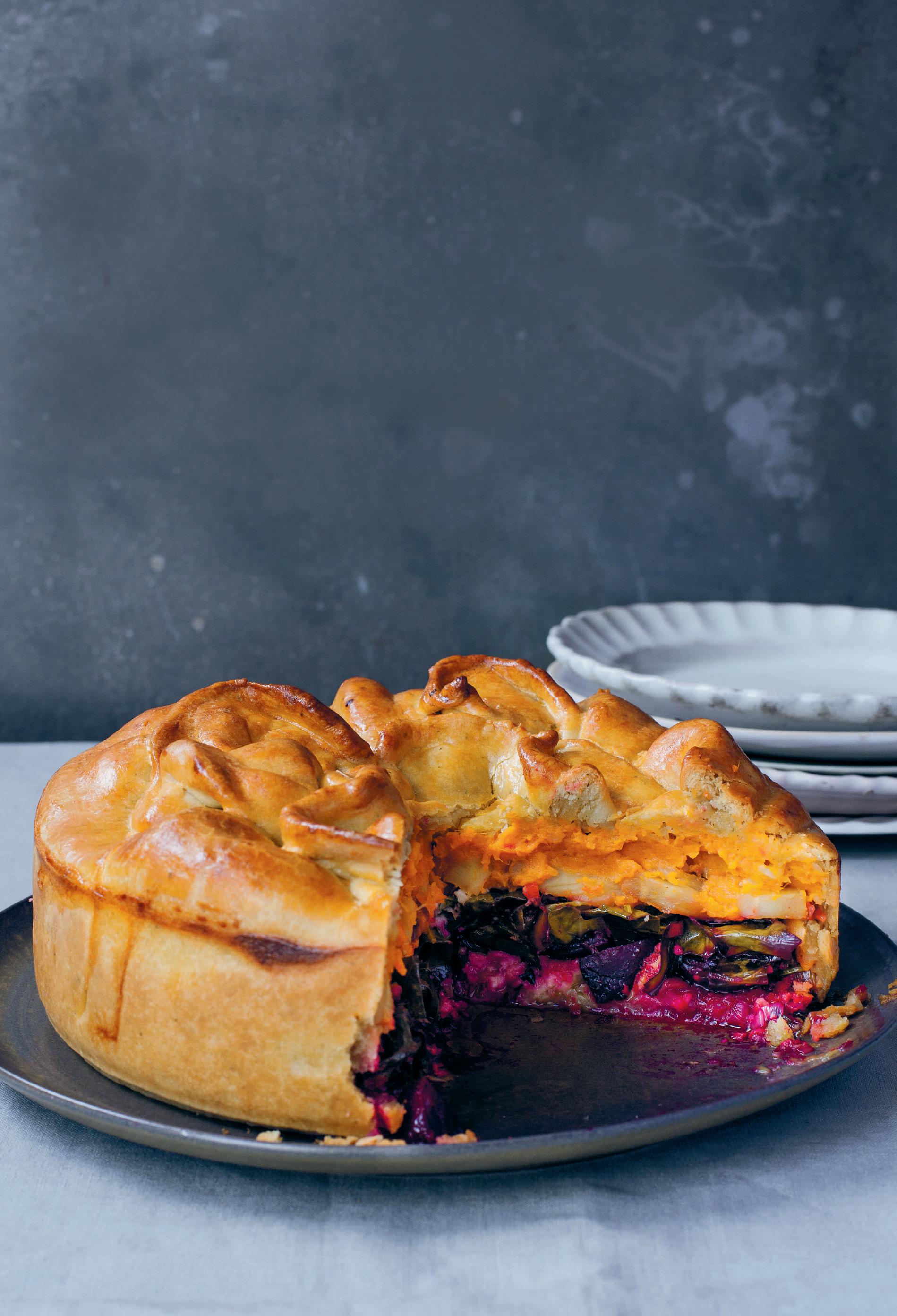




I wanted to thank you for supporting the Soil Association’s work to develop their Food for Life programme. I am writing today to say how fabulous Food for Life has been since we introduced it in our school. It’s having an incredible effect on the children’s health and welfare.
When we first talked about the programme, I was determined that our school should go for the Gold standard. I wanted the children, and their parents, to be proud that their school served food that is healthy, ethical, and nature-friendly, with a minimum of 15% organic ingredients.
It was a challenge, but I cannot praise enough the support that the Food for Life team have given us! Nothing is ever too much trouble. The advice and support we’ve received to completely change our menu has been amazing. Now we’re delivering high-quality food that’s having a huge impact on the children’s lunches. The meals look so appealing and colourful, and I’ve noticed the children are becoming much more adventurous in their food choices.
I know our school, and our children, will continue to thrive with the Food for Life programme.
It’s wonderful to read about the progress being made elsewhere with children’s food at UK visitor attractions. Children are eating healthier as a direct result of the Out to Lunch campaign featured on page 8. World Soil Day on 5 December is an opportunity for us to get the children learning more about where their food comes from and spend some time in our growing areas, picking vegetables for the school kitchen. Find out more about World Soil Day and how you can get involved on page 6
Together we can change this world for the better. Food for Life is living proof of that! You can read more about the Soil Association’s Christmas appeal to get even more children eating healthy and sustainable meals on page 16.
Warmest wishes,
Juli Copley Head Teacher, Radleys Primary SchoolHorticulture Corner
How to plant a tree
Horticulture Corner
Notes from the Farm An update from Helen
Growing without Peat Chickens Why don’t we care more?
Gifts in Wills The most natural gift in the world
Recipe for the Season Try these veg pasties using leftover veg Notes from the Farm The latest at Empire Farm
Your Seasonal Recipe Wow your friends with this vegetarian pie Soil Association’s Christmas Reading List With recommendations from across the organisation
Contact us on: memb@soilassociation.org 0300 330 0100
Please get in touch if you would like this magazine in a different format
We’re really proud to have had Monty Don present our BBC Radio 4 appeal to help raise awareness of the vital work our Innovative Farmers Programme does in championing nature-friendly farming. Our aim was to tell even more people about why our soil needs to be looked after and the importance of farmer led innovation and the support that the Soil Association programme offers. Thanks to those who tuned in or donated to the appeal.
Our soil championing continues with our call to ‘Get dirty for climate and nature’ on World Soil Day
We’re encouraging people to go outside and get dirty! Whether that’s digging in your allotment, going for a country walk, or tucking into a picnic in the park; take the time to appreciate the importance of healthy soil to our natural world. Find out more on page 7.

You’re making a world of difference
You’re supporting farm innovation
You’re putting pressure on UK supermarkets to put an end to toxic pesticide use in their chicken supply chains.


Over 30,000 of you signed our Stop Poison Poultry petition and 1,800 people sent letters directly to supermarket CEOs calling for an end to these practices. The amazing support has helped us demonstrate clear public concern for the impact of pesticides, including pesticides that are banned for use in the UK, on wildlife and people in Latin America.
You’re ensuring that kids have access to healthy and sustainable food

Thanks to you, our Out to Lunch campaign has been running since 2013 and we’ve seen huge progress made by high street restaurant chains. This year, nine visitor attractions committed to serving veg with every child’s meal. Read more on pages 8 & 9 about this year’s campaign which assessed children’s food on offer at UK visitor attractions.
Over the last 6 months, we have seen 4,354 new innovations in organic, across both food & drink and health & beauty. With every purchase of certified organic products, you’re voting to reduce the use of pesticides and promoting nature-friendly farming.
This news follows the huge success of this year’s Organic September, which saw almost 49,000 people sign a petition calling for the new Prime Minister to protect nature’s essential “keyworkers”, by committing to nature-friendly policies. Thanks to all who got involved!

World Soil Day, 5th December 2022, aims to raise awareness of soil, its depleting health and the importance of healthy soils for climate and nature.
Soil sustains us, stores carbon, provides a home for billions of organisms, and can help defend us against flooding and drought, but too often we’re taught to think of it as dirt! As a result, many of the world’s soils are now in crisis.
Just one teaspoon of soil may harbour up to 10 billion different microorganisms.
A single hectare of soil has the potential to store and filter enough water for
1000
people for a whole year.
We lose the equivalent of of soil every minute to degradation.
Soil carbon loss is estimated to amount to
of UK greenhouse gas emissions, higher than many industrial and energy sources combined.
• Combat climate change:
Healthy, well-managed soils absorb carbon dioxide and store it within the soil as organic matter. This makes them an essential resource for reducing our greenhouse gas emissions and tackling climate change.
Degraded soils release carbon and other greenhouses gases into the atmosphere, making them a major source of emissions, rather than the carbon sink they should be.
• Feeding the population:
95% of the food that we eat comes from soil. Healthy soils provide the foundation for healthy food systems – it would be impossible to address food security without them.
Essentially, feeding the world starts, and ends, with healthy soil.
• Preventing droughts and floods:
Healthy soils store and absorb water, with the help of soil organisms, organic matter and good soil management. This makes them a vital resource for protecting against flooding and droughts.
What can be done to help?
The good news is that, by changing the way we farm and eat, we can help protect our soils, for generations to come.
Organic farms store, on average, nearly 3.5 tonnes more soil carbon per hectare than conventional farms.
That’s why, at the Soil Association, we are doing what we can to protect our soils by encouraging farmers to transition towards more nature-friendly farming practices like agroecology and reduced pesticide usage. Our Innovative Farmers programme is also working with farmers nationwide to trial new farming methods to improve soil health.
And attitudes towards soil health are changing. This year, soil took centre stage at Egypt’s COP27 in the first-ever Food Systems Pavilion, representing a huge opportunity to ensure that the health of our soil is considered by policymakers in discussions.
This World Soil Day, we’re encouraging people to go outside and get dirty! Whether that’s spending time on your allotment, going for a country walk, or tucking into a picnic in the park; take the time to appreciate the importance of healthy soil to our natural world. We’d love you to take a photo and tag us on social media @soilassociation.

Our Out to Lunch campaign is back, and revealing how attractions are ‘slicing, dicing and ditching’ children’s menus as they battle with rising ingredient costs and staff shortages.
We sent an army of ‘secret diner’ families out to assess the quality of food on offer at 16 of the UK’s most popular visitor attractions. We gathered the results and marked the attractions out of 100, scoring them on family friendliness, healthy options, food quality, value, sustainability, and ingredient provenance.
Our secret diners rated the Eden Project as the best attraction overall, by serving balanced meals with local, fresh, sustainable ingredients. Closely followed by Royal Botanical Garden Edinburgh, Chester Zoo, Science Museum and ZSL London Zoo.
Drayton Manor took the unenviable bottom slot of the league table due to a lack of kids’ meals and an abundance of sugary treats, with World Museum and The Ulster Museum narrowly avoiding last place.
Overall, parents reported a lack of options with children’s menus removed entirely or smaller than before the pandemic.
Children weren’t offered hot meals at almost half of the venues and several only offered “nutritionally inadequate” packed lunches lacking fruit or veg.
Interestingly, the investigation also found that the higher quality meals at the top two attractions are also among the more affordable days out. Second place holder Royal Botanic Gardens Edinburgh doesn’t charge for entry and eating out at league table leader Eden Project costs just 24p more than dining with bottom-place Drayton Manor.
Soil Association Head of Policy for Healthy and Sustainable Diets, Rob Percival said: “It’s a tough environment for caterers, who are grappling with staff shortages and rising ingredient costs, but it’s disappointing that children’s health seems to be taking the hit. There are some great examples of caterers who do put children’s health first. The others must catch up”.
Since we started the Out to Lunch campaign in 2013, your contribution has triggered huge progress by high street restaurant chains. Changes we’ve seen so far include:
• More vegetables now feature on kids’ menus: millions more portions of veg are being served because of the combined impact of the campaign
• There has been a huge increase in vegetarian and vegan options: reflecting the customer demand for diets containing less meat
• Ten out of twenty restaurants have signed the ‘Stop Deforestation Pledge’, with a goal to make their supply chains better for the planet
• Several restaurants are actively looking at ways to address the sugar levels currently found in kids’ desserts.
1 Eden Project 65 2 Royal Botanic Gardens Edinburgh 64 3 Chester Zoo 63 4 Science Museum 62 5
ZSL London Zoo 62 6 Natural History Museum 61 7 Westonbirt Arboretum 60.5 8
Kelvingrove Art Gallery & Museum 60 9
Kew Gardens 59 10 ZSL Whipsnade Zoo 43 11 The Great North Museum 42 12 National Museum Cardiff 34 13 Legoland 32 14 World Museum 30 15 The Ulster Museum 30 16
Drayton Manor 23
19 million more portions of veg will be served with children’s food in the next 12 months because of our Out to Lunch campaign.
Approximately seven million Christmas trees are bought each year in the UK, with recent figures suggesting that almost half of these trees are fake. So, what’s the environmental impact of a real or fake tree? And which is the most eco-friendly option?

Artificial trees can be problematic for a number of reasons. Most artificial trees are made in China before being shipped overseas, therefore racking up their carbon footprint. But it’s not just the shipping that’s having a detrimental impact on our environment; they are also made from plastic, PVC and metal, making them non-recyclable.
According to the Carbon Trust, a two-metre artificial tree has a carbon footprint of around 40kg, more than ten times that of a real tree that’s burned after Christmas.
In other words, you’d need to re-use an artificial tree 10 times to negate its carbon footprint, yet it’s estimated that fake trees are used only four times, regardless of improving quality.
When comparing an artificial tree with a real, locally sourced tree the difference is stark.
Christmas trees take around 10-12 years to grow to the most popular size of 6 feet. During that time, they provide a habitat for wildlife and capture carbon from the atmosphere.
The environmental impact a real tree has depends largely on how you dispose of it. If this year’s tree ends up on the rubbish heap it will have a greater impact than one that is used for wood chip or burned.
If you’ve decided to go for a real tree this year, there are a few things to look out for! Firstly, you don’t need to worry about deforestation when purchasing a real tree: most Christmas trees are grown as a horticultural crop and aren’t felled from pre-existing forests.

• Source it organically If possible, source your tree from an organic retailer or farm shop as these providers are more likely to opt for growers who totally avoid pesticides on their farms.
• Source it locally
It goes without saying, the more locally the tree is sourced the better, as it reduces miles travelled, supports the local economy and adds an extra element of traceability to the centrepiece of your Christmas decorations.
And remember, don’t be afraid to ask about the environmental credentials of the tree you’re thinking of buying!
What should you look for in a real tree?
Did you know that burning a tree reduces potential emissions by 80% over those that are thrown out?
The Soil Association Charity is delighted to be welcoming Sabine Vandenbroucke on board as a new trustee! Sabine will join our Board of Trustees, who share ultimate responsibility for governing the Charity, volunteering their time and applying their skills and experience to guide our work.

Until recently, Sabine was the Chief Operating Officer of Condé Nast Publishing, where she oversaw the operations of Vogue, GQ, Wired, House & Garden among other titles. Previously, she was the Chief Operating Officer of the media brand Monocle, which she helped establish and develop into multiple brand extensions with global reach. Prior to that, she was the Chief Financial Officer for the creative design agency Winkreative in Zurich and London. Before moving to the UK, Sabine worked in the recycling industry in Germany, France, the Netherlands and Belgium, her native country.
She sits on the board of the Belgian publisher Die Keure and is a trustee of the National Army Museum. She is chair of the Audit and Risk Committee of both organizations. Sabine studied business engineering and philosophy before completing her MBA at INSEAD. She is a member of Chapter Zero. Sabine lives in London with her husband Michael and their teenage son, Raphael.




At Food for Life, we know that caterers are the army behind serving good food to schools across the country. Throughout the pandemic, Brexit and now further price rises due to the cost of living, caterers continue to serve hot school meals to school pupils.
The cost-of-living crisis has seen costs go up not just for caterers, but for families too. The need for a healthy, hot school meal is vital this winter, and there are too many children missing out.
All children in reception, year 1 and year 2 (Foundation and Key Stage 1) are eligible for free school meals. However, above this age, it is only some children whose family are in receipt of benefits (e.g. Universal Credit) who are eligible. Broadly speaking, it is only households with a combined income of less than £7,400 a year.
We estimate that there are 800,000 children living in poverty who are not eligible for free school meals.

Imagine if all primary pupils received a hot, healthy school meal


Thanks to funding from the Mayor, and Public Health provided by the local council, this is the case for all children at Tower Hamlets Primary Schools. All pupils in the area can receive a free school meal.
Tower Hamlets serves approximately 16,500 meals a day to 57 schools and nurseries. 1,400 meals are freshly cooked each day in a Central Production Unit and are delivered to schools with limited or no cooking facilities.
“Currently, uptake of school meals across the country is variable, affected by quality, accessibility and image. Increasing uptake of both free and paidfor school meals, alongside reforms to school food funding mechanisms, will lead to a more economically efficient system, supporting caterers to invest in the future. It will ensure more children access more nutritious food, reduce stigma, and boost the benefits of a ‘whole school approach”. Says Rob Percival, Head of Policy (Food and Health).
Andrea Hardy is the Catering Operations Manager at Ben Johnson Primary School, a school within the Tower Hamlets remit. They’ve shared how their school encourages all children to receive a hot school meal, which can help ensure that every child has access to good food.
“Nearly all the children have a cooked meal because it’s free. We are trying to educate them about food as well as feeding them. We have taster sessions with the children and parents which helps with trying to get those with packed lunches to choose a school lunch.”
The rising costs of all food and services are putting pressure on catering budgets – currently, the meal price charged is below the true cost of the meal.
Caterers are also saying shortages of basic items, such as bread, are common occurrences because ingredients such as maize and wheat starch have been adversely affected by the Ukraine/Russian conflict. They are having to make multiple ingredient and food substitutions on a daily basis.
Pauline Gati, the Kitchen Manager at the Central Production Unit that caters for 15 Tower Hamlets schools and nurseries, said;
Our Food for Life programme is campaigning for the English Government to:
Expand eligibility for Free School Meals. This expansion should initially be to all children from families in receipt of universal credit, with further expansion to a universal approach to follow.
Carry out a wholesale review of school food policy, supporting cooks and caterers. This will be particularly key for increasing the capacity to serve more school meals, and the future security of the system.
You can help support the extension of free school meals by signing the Biteback petition here: https://www. foodforlife.org.uk/whats-happening/ news/news-post/tower-hamlets
We have already made great progress in Scotland, with 18 of 32 local authority areas now accredited with Food for Life, and a government commitment at the last election to look at expanding the programme into other parts of the public sector.
We’ve never had a time like this where prices are rising so often. If things change we will adapt, at the end of the day these children need their food so we need to find a way […] it’s hard to predict but we try to be more creative.








The first years of a child’s diet are fundamentally important. What they eat affects their physical and mental development, and shapes how they will relate to food for the rest of their life.
So it’s alarming that the UK has one of the worst records in Europe on childhood obesity and ultra-processed diets. By the time our children start school, one in four is overweight. In short, our food system is broken for the young – and it has to change.
We believe every child has the right to a healthy, delicious and sustainable school meal. As someone who regularly supports our work, I’m sure you’ll agree wholeheartedly. That’s why, with your support today, we’re determined to expand our successful Food for Life programme across the country.
Food for Life works with caterers in over 50% of primary schools in England and Scotland, helping them to put good food at the centre of children’s lives. We’ve achieved extraordinary things already. Two million meals served daily under the ‘Food for Life Served Here’ banner.
We’re now pushing for Government proposals to go ahead to build on the decade-long achievements of Food for Life to ensure that all children have balanced, wholesome diets with access to sustainable, nutritious food in English schools. We have already made great progress in Scotland, with 18 of 32 local authority areas now accredited with Food for Life, and a government commitment at the last election to look at expanding the programme into other parts of the public sector.
But we’re not there yet. There’s still a lot of work to do. We still need to persuade the Government that this is achievable for England. Can you give to our Christmas appeal to deliver a brighter future for our children’s health?
Together, we can make every day one where children have a hot, nutritious meal that helps them thrive. Truly, what a gift that could be.
That’s 400 million meals every year verified as being freshly prepared with sustainable, traceable ingredients.











Hair
www thegoodzestcompany co uk
www thegoodzestcompany co uk

Natural Zesty Hair & Skincare
Natural Zesty Hair & Skincare
Natural Zesty Hair & Skincare 15%
Do you need a little more zing in your life? Get 15% off with code organic15.
Do you need a little more zing in your life?
Get 15% off with code organic15.
Packed with vitamin C and natural antioxidants that work to repair skin cells; organic mandarins, limes, oranges, lemons and grapefruits are at the heart of all ‘The Good Zest Company’’ Hair & Skincare formulas helping you find the perfect balance between outer beauty and inner wellness
Packed with vitamin C and natural antioxidants that work to repair skin cells; organic mandarins, limes, oranges, lemons and grapefruits are at the heart of all ‘The Good Zest Company’’ Hair & Skincare formulas helping you find the perfect balance between outer beauty and inner wellness
Packed with vitamin C and natural antioxidants that work to repair skin cells; organic mandarins, limes, oranges, lemons and grapefruits are at the heart of all ‘The Good Zest Company’’ Hair & Skincare formulas helping you find the perfect balance between outer beauty and inner wellness

Packed with vitamin C and natural antioxidants that work to repair skin cells; organic mandarins, limes, oranges, lemons and grapefruits are at the heart of all ‘The Good Zest Company’’ Hair & Skincare formulas helping you find the perfect balance between outer beauty and inner wellness


Certified Organic Ingredients
Certified Organic Ingredients
Certified Organic Ingredients
Vegan
Vegan Cruelty Free Naturally fragranced Eco Aluminium bottles www thegoodzestcompany co uk

Certified Organic Ingredients
Vegan Cruelty Free Naturally fragranced Eco Aluminium bottles
Vegan Cruelty Free Naturally fragranced Eco Aluminium bottles www thegoodzestcompany co uk

There has never been a better time to plant a tree! From their invaluable role in fighting climate change and cleaning the air of our cities, to the huge mental health benefits being around their leafy presence can bring, trees are at the very centre of both our urban and rural ecosystems.
Written by Soil Association’s Head of Horticulture, Ben Raskin, Plant a Tree and Retree the World teaches the practical how-tos alongside the most interesting insights to appreciate the significance of magnificent trees.

The book is broken into four fascinating sections:
Trees and the World –Celebrating just how vital trees are to our planet.
Growing Your Own Tree – Tips on growing saplings from seed, cuttings or grafting, plus guidance on care and maintenance.
40 Best Trees – A guide to the top trees, including how to recognise them.
Trees and Happiness – How do trees make us happier?
Whether you’re a keen gardener, an avid environmental activist or simply want to learn more about these beautiful and powerful organisms, this must-read book illustrated by popular screen-printer Rosanna Morris sends the powerful message that we can plant a tree & retree the world!
At a time when planting trees could be helping to save the planet, it’s even more vital that the tree you plant not only survives but grows well and quickly. Let’s look at how to give your tree the best start in life so that it is still standing even when your children and grandchildren are long gone from this earth.
As a rule, dig a hole just a bit bigger, but no deeper than the roots of the tree you are planting.
Bare root trees - these will have little or no soil on the roots. For many species you can prune the roots back before planting to encourage new growth once the tree is in the ground. It makes planting much easier and has no ill effect on growth.
Pot grown trees – often the roots will have started to grow around the inside of the pot, this is called being “pot bound”. Simply take a sharp knife or secateurs and cut through the roots around the edge. This will encourage fresh roots that should grow outwards.
Check the hole depth is right, by laying a stick across the top of the hole and making sure the stick lines up with the right part of the tree.
Bare root trees – Holding the tree firmly with one hand, half fill the hole with soil, give the tree a gentle shake to allow the soil to get between the roots. Firm softly with your feet, then fill the rest of the hole with soil, shake again and then tread more heavily to ensure the tree is properly in the ground.
Pot grown trees - Just pop them in the hole, ensuring the top of the root ball lines up with the soil surface, then fill the soil around and firm in as above.
Historically it was recommended to add compost into the planting hole. However, this can create a lovely rich planting hole that tree roots are reluctant to leave, so it is better to mulch on top of the tree.
For tiny saplings, staking may not be necessary, the blowing wind stimulates them to grow strong roots to hold them
in place. However, for anything over 60cm (2 ft) tall I would recommend a stake, and for bigger trees a strong one is essential.
In a dry year, it is essential to water. It helps to settle the soil amongst the roots ensuring good root/soil contact. The crucial period is in the first spring as the new and still shallow roots grow and look for water. Water perhaps once a week with a really good soak.
Using a good mulch will reduce competition from weeds and increase the water available in the soil by about 25%, this can be the difference between death or survival. I recommend a wood chip mulch, of at least 10cm thick. Make sure that it does not touch the trunk of the tree as that can cause a damp area that encourages rotting and disease.
This Winter, the Soil Association will be planting more trees at Woodoaks, a farm donated to our charity, to rebuild habitats for local wildlife and play a part in the fight against climate change.
Also taking place, the Queen’s Green Canopy is a nationwide initiative to plant over a million trees in Her Majesty Queen Elizabeth II’s name. The trees will serve as a living legacy, and a lasting tribute to her Majesty’s extraordinary service to her country and her people.

Registered with




The world’s first Organic Gin
Famous for aroma and flavour Smooth and delicious Winner of 25 medals since 1999 Gluten-free and suitable for coeliacs
Available online from: Abel & Cole, Ocado, Speciality Drinks, Suma, Vinceremos, Vintage Roots or at your local specialist retailer
The Organic Spirits Company
Tel: 01483 894650 Email: office@londonandscottish.co.uk
“I would have never thought tea could taste this good. A hint of sweetness suffuses your mouth remaining over the course of the day making you want another cup and one more. My all time favourite.”
O. Gocen on Clearspring Organic Japanese Sencha


www.clearspring.co.uk



This year, the widespread drought and searingly high temperatures wreaked havoc with grass production, so much so that we fed hay that should be in the barn for winter as early as July and didn’t make anything like the quantities of silage that we usually do. Keeping animals cool was a worry too; if only our new woodland and agroforestry were 20 years older!
The other uncertainty that’s plagued us and most other farmers over the decades is animal disease. Many of you will recall the deep trauma that Foot and Mouth caused in 2001, and again in 2007. Similarly with BSE. Even if an individual farm wasn’t affected, the impact was still enormous. Over the last couple of years, Avian Flu has traumatised the poultry sector, and required that all free ranging birds are
confined indoors. The impact on some wild bird populations is horrific too. The fear that African Swine Flu might enter the country is keeping pig farmers awake at night, alongside their spiralling feed costs due to the war in Ukraine.
For us, the disease that takes up so much time and effort to control is Bovine TB. It’s endemic in much of the country now and requires us to test all cattle every 60 days. This takes almost all our time for two weeks, every two months, and also prevents us from selling animals except to slaughter. We attempt to vaccinate all our badgers to prevent re-infection, but catching these wily creatures is not the easiest task!
As I write this, I’m awaiting news of our latest results; we have gone clear so far, but it only takes one infection to take us back to square one.
There’s so much outside of our control in farming, which makes it incredibly difficult to plan with any confidence. Weather is always an uncertainty, of course; at times you can understand the attraction of bringing it all into indoor environments. (Not really!).
So, weather, war and disease, energy prices rising relentlessly, Brexit impacts still taking their toll…..who on earth would be a farmer?! But of course, living on the land brings unexpected joy much of the time. Today my spirits were lifted by the two herons who seem (for some reason unfathomable to me) to have made their home in the agroforestry. Last week, a most unwelcome call at 10pm, letting me know that the heifers had escaped their allotted field, meant that we walked them home in moonlight, a magical moment. And after the drought, pastures are now lush and green.
As ever, we strive to make progress despite the obstacles. This year, we’ve been working with the wonderful Pete Richardson, who is growing a huge variety of veg, salads and herbs on the farm. We had our first cherry harvest, and launched a gin made with the sea buckthorn and pears in Barn Field; a Cassis is also brewing away, using the blackcurrants that intersperse the fruit trees there. We’ve started to
take waste produce from Able and Cole, and I’ve loved seeing the many children that visit feeding this to the pigs, and learning whether they prefer watermelons, bananas or potatoes! And we’ve planted more hedges, which survived the drought thanks to the copious mulching with woodchip.

Most exciting of all is the work we are doing with Andy Cato and his Wildfarmed team. When I first started farming in the mid-80s, my dream was to grow arable crops without the need for ploughing, by stitching the crop into a living clover ley. But it came to naught; the equipment and expertise was not available. This year we grew our first wheat this way, and while the yield was less than we hoped, it was at least proof of concept. We’ve done better with establishment this autumn, so fingers crossed. I’ll let you know how it’s going in the spring!

We launched a gin made with the sea buckthorn and pears in Barn Field



A will is such an important document. It’s not just a necessary piece of admin. It’s an opportunity to ensure that your love and care lives on. A chance to nurture and support every one and every thing that you cherish in life.
To get your free Soil Association guide to gifts in wills, email Siobhan at giftsinwills@soilassociation.org or call her on 0117 914 2432.

Or you can download the guide at: soilassociation.org/giwrequest Alternatively, return the response form opposite to our freepost address




A show-stopping pie that tastes even better than it looks.
This goodwill pie from chef Anna Jones requires a bit of time and love – but it’s perfect as special treat for the Christmas holidays and a great veggie or vegan option for Christmas dinner.
 Living Earth Winter 2022
Living Earth Winter 2022
Serves 8-10
• Shortcrust pastry
• 200g cheese
• 1 egg or soya milk for brushing
• 3 sweet potatoes
• Fresh nutmeg
• 5 medium beetroots
• Olive oil
• Red wine vinegar
• Oregano
• Salt and pepper
• 4 parsnips
• Sage
• Zest of 1 unwaxed orange
• Honey
• 2 good-sized leeks
• 2 heads of winter greens
• Grated zest and juice of ½ an unwaxed lemon
• 1 red chilli, finely chopped
It might seem like there’s a lot to do for this pie, but everything can happen at once – all the roasting can be done while you get on with the leeks and greens.
Pre-heat oven to 220°C. Make your pastry and place in the fridge to cool or use pre-made.
Roast the sweet potatoes for 1 hour. Leave to cool.
Cube the beets and add olive oil & vinegar, seasoning with chosen herbs. Cover with foil and roast for 1 hour, remove foil for last 15 mins. Mix the parsnips with sage, orange zest, honey and a drizzle of olive oil, cover with foil and roast for 45 mins, remove foil for last 5-10 mins.
Remove veg from the oven, reduce temp to 200°C. Leave to cool.
Meanwhile, cook the leeks. Heat butter or oil in a frying pan. Add the leeks and thyme, cook over a low heat for 20 minutes, then set aside. Add a little more olive oil to the pan, add the greens and cook over a low heat for a few minutes. Season, then add the lemon zest and chilli.
Scoop out flesh from the sweet potatoes and mash together with butter or olive oil and a grating of nutmeg.
Remove pastry from fridge and roll it to 3mm thickness on a lightly floured surface.
Line a 20cm springform cake tin, leave some hanging over the edges. Create layers by adding the leeks, then a grating of cheese, the beets, the greens, and another layer of cheese, then the parsnips and finally the sweet potato mash.
Bring the excess pastry roughly over the top of the mash, brush with beaten egg or soya milk.
Bake the pie at the bottom of the oven for 35–40 minutes, until golden brown. Leave to cool for 15–20 minutes, and remove from the cake tin. Serve with gravy!
To make this vegan, use vegetable shortening or coconut oil instead of butter in pastry and veg preparation, omit the cheese and use soya milk to brush the pastry.
Christmas is fast approaching, and with it the slower days and cosy evenings – perfect for curling up with a good book!
We’ve asked our Soil Association colleagues to recommend their favourites for your holiday reading list, and there’s something for everyone! From forestry to fiction, here are our top picks:

This book offers a rare combination of accessibility to the general interest reader but with a serious analysis of the state of forestry in the UK in the 21st century. If you love trees and woodland, but also want to know a bit more about some of the current challenges and debates, this is the book for you. The book is stuffed full of history, facts, case studies, lovely images and the design is great as well. It works as either a book to dip into or as a read from end to end and I highly recommend you purchase two copies at least. One for your own reading and one as a gift to inspire someone else.
John English, Senior Horticultural Manager:
‘The Seed Detective’ by Adam Alexander
Adam is a traveller and seed saver and tells the stories of how the crops we eat today were bred from wild plants by our agricultural ancestors. It’s also a beautiful celebration of the pleasures of growing and eating vegetables! And why preserving the biodiversity of seeds is so important to the health of our food and farming.
I haven’t read this book yet, but it’s going to be my next read as it’s got great reviews! It’s a novella about what it’s like to live in these times of political uncertainty and climate crisis, set in the United States before and after Donald Trump becomes president.
This is the essential guide to the modern food system, plotting the radical shift in global diets across the past two generations. It tracks the industrialisation of traditional food cultures, revealing the hidden forces behind what we eat – and the possibilities of the future.
I highly recommend you purchase two copies at least. One for your own reading and one as a gift to inspire someone else.
Join the Bookworms!
For more book recommendations, follow us on Instagram at @soilassociation. We run a monthly book club with an environmental focus and invite fellow bookworms to share their thoughts in the comments section!






